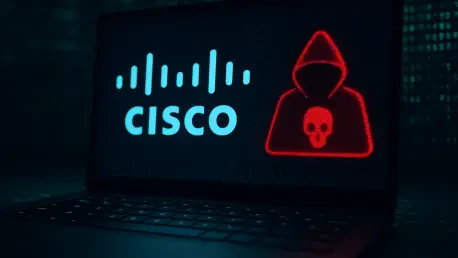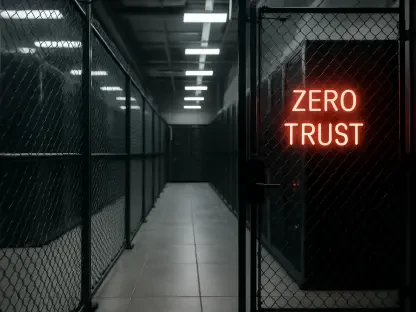In a startling revelation, the Federal Bureau of Investigation (FBI) has announced a $10 million reward for information leading to the identification or arrest of Russian Federal Security Service (FSB) cyber operators linked to a sophisticated campaign exploiting vulnerabilities in Cisco networking equipment. These hackers, associated with FSB’s Center 16 and known in cybersecurity circles as “Berserk Bear” and “Dragonfly,” have been targeting critical infrastructure across the United States. Their focus on legacy hardware and unpatched flaws poses a severe threat to essential services like energy grids and water systems. This bold move by the FBI underscores the escalating cyber warfare between nations and highlights the urgent need for robust defenses against state-sponsored threats. As these attacks grow in scale and complexity, the reward signals a determined effort to disrupt malicious operations and protect national security from covert digital assaults.
1. Uncovering the Cisco Vulnerability Exploitation
The core of this cyber campaign revolves around a critical flaw, identified as CVE-2018-0171, within Cisco’s Smart Install (SMI) feature. This vulnerability, which has been known for several years, allows remote attackers to access and manipulate device configuration files without authentication. Such access can lead to unauthorized modifications, creating persistent backdoors for future intrusions. The FBI has noted that many network operators continue to use end-of-life hardware, making them easy targets for exploitation. These outdated systems often lack the necessary security updates, providing a fertile ground for attackers to infiltrate networks. The simplicity of exploiting this flaw enables widespread compromise with minimal effort, amplifying the potential damage. As attackers map internal network topologies through these breaches, the risk of deeper penetration into sensitive systems increases significantly, threatening operational integrity across multiple sectors.
Compounding the issue is the reliance on outdated protocols like SNMP versions 1 and 2, which lack modern encryption and authentication mechanisms. The FBI has highlighted how FSB operators exploit these weaknesses to retrieve and alter configurations automatically, establishing covert footholds within compromised networks. Such tactics allow attackers to remain undetected for extended periods, gathering critical intelligence or preparing for more destructive actions. Unlike newer protocols that incorporate robust security features, these legacy systems offer little resistance to determined adversaries. The scale of this campaign suggests a deliberate strategy to target organizations that have not prioritized updating their infrastructure. This persistent exploitation of known vulnerabilities underscores a broader systemic issue in cybersecurity preparedness. Without swift action to address these gaps, the window for attackers to cause significant harm remains wide open, endangering vital services and national interests.
2. Impact on Critical Infrastructure
Over the past year, cybersecurity partners working with the FBI have observed thousands of networking devices linked to U.S. organizations being targeted by these Russian operators. Critical infrastructure sectors, including energy, water, and transportation, have emerged as primary focuses of this campaign. Industrial control systems (ICS) and operational technology (OT) environments are particularly vulnerable, as attackers conduct reconnaissance on protocols and applications unique to these systems. This activity indicates a potential intent to disrupt or sabotage essential services that millions rely upon daily. The implications of such interference could range from temporary outages to catastrophic failures, affecting public safety and economic stability. The deliberate targeting of these sectors reveals a calculated effort to exploit weaknesses at the heart of national infrastructure, posing a direct challenge to resilience and response capabilities.
Further evidence of the threat lies in the historical tactics of this group, which include deploying malware like “SYNful Knock” designed to embed itself into Cisco firmware and evade detection. The current campaign builds on this approach by focusing on mass exploitation of unpatched legacy features, lowering the technical barriers to widespread network compromise. Many organizations may not detect subtle changes to configuration files until a more damaging second-stage attack occurs. This stealthy progression heightens the risk of prolonged undetected access, allowing attackers to refine their strategies over time. The FBI has warned that the true extent of these infiltrations may remain hidden until significant harm is inflicted. As these threats evolve, the need for heightened vigilance and proactive measures becomes paramount to prevent disruptions that could have far-reaching consequences for public welfare and security.
3. Strengthening Defenses Against State-Sponsored Threats
In response to this escalating threat, the FBI, alongside law enforcement partners, has issued updated guidance to mitigate risks associated with these cyber operations. Key recommendations include immediate patching of Cisco software to secure or disable the Smart Install feature, phasing out unencrypted protocols like SNMP v1 and v2, and upgrading to SNMP v3 for enhanced security. Additionally, continuous monitoring of configuration files and firmware integrity is advised to detect unauthorized changes promptly. Network segmentation, isolating OT and ICS environments from corporate IT systems and the Internet, is also critical, alongside enforcing strict access controls and multi-factor authentication. Organizations suspecting compromise are urged to contact local FBI field offices or file detailed reports with the Internet Crime Complaint Center (IC3), providing logs and malware artifacts to aid investigations. These steps aim to fortify defenses against sophisticated adversaries exploiting known weaknesses.
Beyond official guidance, specialized resources from cybersecurity entities like Cisco Talos have offered valuable insights into this threat actor, including indicators of compromise (IOCs) and tailored detection strategies for affected devices. Security teams are encouraged to integrate these findings with FBI recommendations to build comprehensive protection mechanisms. The convergence of aging infrastructure and insufficient patching practices amplifies the urgency of adopting rigorous cybersecurity hygiene. As FSB operators continue to refine their tactics and expand their campaigns, proactive measures remain the most effective way to safeguard critical systems. The $10 million reward serves as a powerful incentive to disrupt these operations, but lasting security depends on systemic improvements in infrastructure and response protocols. Addressing these challenges requires a collaborative effort across public and private sectors to stay ahead of evolving digital threats.
4. Reflecting on a Persistent Cyber Challenge
Looking back, the sustained efforts by FSB-linked hackers to exploit Cisco vulnerabilities revealed a glaring gap in cybersecurity readiness across critical sectors. The campaign’s focus on legacy systems and unpatched flaws exposed how delayed updates and outdated protocols provided fertile ground for state-sponsored threats. The FBI’s response, including the substantial reward, marked a significant push to hold malicious actors accountable while urging organizations to prioritize security. Reports of widespread targeting of infrastructure underscored the potential for severe disruptions, prompting a renewed focus on resilience. Each incident served as a stark reminder of the stealth and persistence of these adversaries, whose actions often went undetected until substantial damage was imminent. The lessons learned from these events emphasized the need for constant vigilance and adaptation in an era of relentless cyber warfare.
Moving forward, the emphasis shifted to actionable solutions and long-term strategies to counter such threats. Strengthening patch management, modernizing protocols, and enhancing network monitoring emerged as essential steps to prevent future breaches. Collaboration between government agencies, private companies, and cybersecurity experts became crucial to share intelligence and develop robust defenses. The focus also turned to fostering a culture of proactive security, encouraging organizations to anticipate risks rather than merely react to them. As digital landscapes continue to evolve, investing in cutting-edge technologies and training to secure critical systems will be vital. The resolve to protect national infrastructure from covert attacks must remain unwavering, ensuring that past vulnerabilities do not dictate future outcomes.









